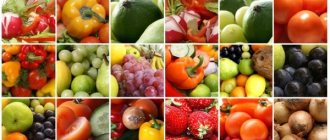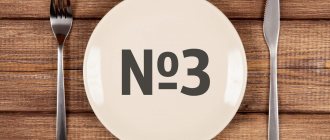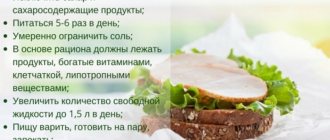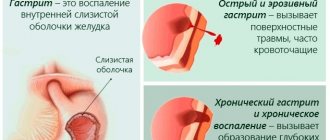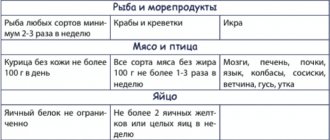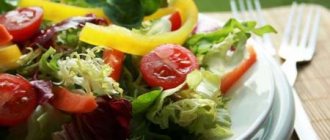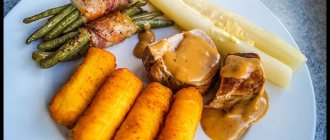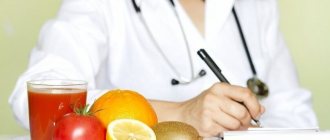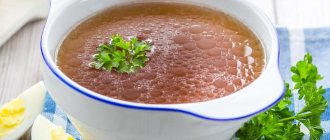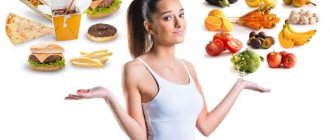In the structure of overall mortality, diseases of the cardiovascular system occupy a leading place. Therefore, it is important to carry out preventive measures and explain the need for the use of comprehensive treatment programs (diet therapy, drug treatment and dosed physical activity) among the population. The key to treating heart and blood vessel diseases is nutrition.
The diet, which is used to treat the cardiovascular system, was developed by Manuil Pevzner, a Soviet scientist, professor and nutritionist. Familiarity with the technique will allow you to minimize the risk of heart attack, stroke, atherosclerosis, and more effectively undergo rehabilitation for existing diseases of the cardiovascular system.
Key principles of dietary nutrition
The goal of diet table No. 10 according to Pevzner is to restore the normal functioning of the cardiovascular system. To do this, it is necessary to reduce the concentration of cholesterol in the blood, restore metabolic processes in the cells of the body, remove excessive stress on the blood vessels and urinary organs, and lose weight. The following nutritional principles will help you achieve positive results:
- Limiting salt intake. The maximum dosage of sodium chloride is 7 grams per day.
- Reducing the amount of liquid you drink. 1.1 liters per day is enough.
- Avoiding foods high in cholesterol.
- Reducing the consumption of carbohydrates that are easily absorbed by the body.
- Introduction to the menu of dishes containing increased dosages of magnesium, potassium and calcium.
- Refusal of extractives - non-protein compounds obtained from animal muscle tissue by digestion.
According to Pevzner’s method, a person should consume 2000 kcal per day. You will have to exclude foods containing coarse fiber from your diet. They create an increased load on the digestive system, which negatively affects the health of a person suffering from heart problems.
When creating a menu, it is important to monitor the ratio of proteins, fats and carbohydrates. Ideally, it should be maintained at 80/70/350 grams.
Diet No. 10b
Table No. 10 is often prescribed to patients after a myocardial infarction, as well as in the presence of rheumatic heart disease without circulatory failure. Compared to other diet options, diet No. 10 is broader and the drinking regime is not as strict. It is important for the patient to increase foods high in potassium and magnesium in their diet: nuts, cereals, milk. The menu must include protein foods, with a predominance of animal protein.
After a heart attack, the diet is prescribed in several stages. The diet consists of three phases, which are prescribed alternately:
- First phase. Lasts during the first week after myocardial infarction. The energy value is reduced to 1200 kcal; the patient is required to eat approximately 1.5 kg of food and 0.8 liters of liquid per day. Dishes are prepared in pureed, crushed form, and the food is taken warm. Salt is not used at all, you can periodically eat crackers from rye bread, fresh vegetables are prohibited.
- Second phase. It lasts for 2-3 weeks and is called the subacute period. Daily calorie content increases to 1800 kcal, liquids can be consumed in a volume of 1 liter. Up to 3 g of sodium chloride is allowed. You can introduce fresh vegetables, increase the amount of protein foods and healthy polyunsaturated fats.
- The third phase begins in the fourth week after the heart attack, during which scarring occurs. The menu at this stage will be complete, the amount of food should increase to 2.2 kg, and water - 1.1 liters. The permissible salt intake is 6 g per day. The list of products is typical for table number 10.
During the rehabilitation period after myocardial infarction, it is important to eat food low in salt; the main amount of sodium chloride will contain bread. It is important to adhere to this rule, because salt tends to retain fluid in the body and lead to edema, thereby further impairing the functioning of the damaged heart muscle. Meat and fish must be boiled before other types of cooking. It is allowed to fry foods in a small amount of vegetable oil. Porridges should be boiled and pureed. Vegetables can be eaten cooked or raw.
After the fourth week from the onset of the disease, the volume of fluid increases to 1.5 liters; all drinks and first courses must be taken into account. The daily calorie intake should be 2500 kcal; if your lifestyle is sedentary, this figure should drop to 2200 kcal.
During treatment, the patient should be periodically observed by the attending physician to adjust the menu.
Who is Diet No. 10 for?
Table No. 10 is designed specifically for patients suffering from the following diseases:
- Hypertension.
- A heart defect that causes heart failure.
- Circulatory disorders of the first and second degrees.
- Cardiosclerosis.
- Atherosclerosis.
- Rheumatism.
- Cardiac ischemia.
- Pathologies of the kidneys and urinary system.
- Diseases of the nervous system.
This diet plan is also suitable for patients diagnosed with stomach diseases. It will speed up the healing of ulcers and gastritis. The duration of the diet is selected individually for each person, based on the characteristics of his illness.
What you can't do on a diet
Prohibited foods and dishes include:
- Any rich and heavy first courses; broth made from mushrooms or legumes is also excluded.
- Sweets, baked goods, fresh bread are prohibited foods for all patients with heart problems.
- Pork, lamb, duck and goose, as well as offal, are excluded from meat products.
- Semi-finished products, sausages, smoked products.
- Spicy and pickled, canned.
- Among vegetables, radishes, mushrooms, garlic, spinach and other components that cause heaviness of the stomach, bloating, and gases are prohibited.
- Fruits with coarse fiber.
- Strong tea, natural coffee, cocoa. Pineapple, grape, and cherry juices are excluded.
Knowing the basic lists of healthy and prohibited foods, you can choose delicious Table 10 diet recipes, prepare a menu for the week and follow it throughout the entire period of treatment.
Types of diet
Depending on the characteristics of a particular disease, several types of diet are distinguished:
- Table No. 10A. It is suitable for patients suffering from heart failure. The main emphasis in this case is on reducing the calorie content of dishes and reducing the volume of liquid drunk.
- Table No. 10B. Prescribed for rheumatism. This means excluding foods that cause flatulence from the menu. An increase in the proportion of animal protein to 60 grams per day is also shown.
- Table No. 10C. Prescribed for atherosclerosis, ischemia and hypertension. A feature of the diet is increasing portions of vegetable fats and fiber.
- Table No. 10G. This type of diet is prescribed to patients diagnosed with essential arterial hypertension. More foods rich in vitamin P, ascorbic acid and thiamine are introduced into the menu.
- Table No. 10R. It is followed by people who struggle with rheumatoid arthritis. A special feature of the diet is maintaining a ratio of animal and vegetable fats of 1 to 2. It is also necessary to reduce the consumption of carbohydrates, which are quickly absorbed by the body.
- Table No. 10I. Used for patients who have suffered a myocardial infarction. All meals should be low in calories to reduce stress on the heart. Liquid consumption is minimized.
All diets are designed to fully satisfy the body's needs. A minimal load is created on the digestive system, heart and blood vessels.
Application and purpose of the diet
The cycle of diet therapy programs for various diseases of the heart and blood vessels is called “table No. 10”. This diet is also applicable in the nutrition of patients with degrees I and IIa of circulatory failure. The use of table No. 10, together with drug therapy, in such patients can improve the course of the underlying disease and reduce the risk of complications. However, this diet is only suitable for compensated or subcompensated disease and should be used only when prescribed by a doctor.
The diet is aimed at restoring normal heart function and normalizing blood circulation. Also, diet No. 10 improves liver and kidney function, helps reduce swelling and shortness of breath, and helps reduce body weight if the patient has concomitant excess weight or obesity. Such results are achieved by following all the nutritional requirements of table No. 10, which are primarily aimed at facilitating the functioning of the gastrointestinal tract and cardiovascular system.
Additional recommendations
Patients following diet No. 10 must follow several additional recommendations:
- Bread must be dried in the oven before use.
- Vegetables are allowed to be eaten only in chopped form. It is best to pass them through a meat grinder or grate them.
- Fruits bring great benefits after heat treatment. They are used to make jelly and compotes.
- It is prohibited to drink industrially produced juices. They contain too much sugar. Table No. 10 involves drinking only freshly squeezed natural juices.
- Cinnamon and bay leaves will help improve the taste of dishes.
To avoid painful feelings of hunger, you need to eat small portions six times a day. The final meal is organized three hours before bedtime.
Meat or fish: what to limit?
Diet number 10 for hypertension says that it is better to reduce the amount of animal saturated fats or not consume them at all (pork, lard, fatty fish, cream, sour cream, fatty cheese). Also exclude sausages, smoked products, canned fish and meat. Leave lean beef, chicken, turkey, rabbit, and vegetable fats. Choose low-fat varieties of fish (cod, pike perch, grass carp, hake). Among vegetable oils, they prefer olive, sesame, sea buckthorn, and wheat germ oil. Vegetable fats are also found in nuts and avocados.
Diet 10 for stage 2 hypertension and hypercholesterolemia completely eliminates the use of salt; it is better to eat meat products stewed in water or boiled. In case of stage 3 hypertension, the consumption of meat products is reduced to a minimum. Blood cholesterol control and blood pressure control are very important!
Example of a daily menu for a week at table 10
The diet should be varied. Even from a limited set of products you can prepare new delicious dishes every day. The approximate menu for the week of table No. 10 is as follows:
Monday
It's better to start the day with a serving of wheat porridge, one egg and a cup of fruit compote. For lunch, a salad of boiled beets with the addition of carrots, as well as an apple, is suitable.
For lunch they cook vegetarian borscht, steam a steak with a portion of mashed potatoes and pumpkin. An excellent afternoon snack would be a handful of prunes and a cup of rosehip infusion.
For dinner, a piece of boiled pike perch is served with a side dish of fresh vegetables. The last meal will be a portion of natural yogurt.
Tuesday
For breakfast, prepare buckwheat porridge with a small piece of butter, wash it down with jelly. Lunch will be an apple baked with honey and cinnamon in the oven.
Lunch consists of a serving of vegetable soup, a piece of boiled chicken with cauliflower in batter. Green tea is served as a drink. For an afternoon snack, they eat applesauce with the addition of dried apricots and natural yogurt.
An excellent dinner would be cottage cheese casserole and croutons with compote. Three hours before bedtime, you can drink kefir.
Wednesday
A steamed omelette, a slice of toasted bread and a glass of juice are suitable for breakfast. Lunch consists of a slice of unsweetened pumpkin pie.
For lunch they prepare vegetable soup from carrots and zucchini, a piece of boiled turkey fillet with stewed carrots, and a glass of tea. One pear will be an afternoon snack.
For dinner they serve cod baked with vegetables and compote. The last meal will be a glass of milk or kefir.
Thursday
For breakfast, semolina porridge is cooked in milk. They also eat a couple of biscuits and drink a glass of compote. Lunch is a portion of fruit with yoghurt sauce.
Lunch consists of vegetarian cabbage soup, a serving of mashed potatoes and one steamed cutlet. Rosehip decoction is served as a drink. For an afternoon snack, drink a smoothie made from fresh berries.
Dinner is a portion of cottage cheese, a couple of fish balls with a vegetable side dish. Three hours before bedtime, eat a few tablespoons of natural yogurt.
Friday
You can start the day with a boiled chicken egg, a portion of buckwheat porridge and a cup of chamomile infusion. The second breakfast will be a baked apple with cottage cheese and raisins.
For dinner they prepare beetroot soup, a piece of steamed pollock with pearl barley. Compote as a drink. An afternoon snack is 1 banana and a glass of rosehip broth.
Dinner consists of a chicken cutlet with vinaigrette and a cup of tea. The final meal will be yogurt.
Saturday
For breakfast, they prepare noodle soup with milk, toast from dried bread with a slice of unsalted cheese and a drink based on chicory. Lunch will be apple and pumpkin puree with honey.
For lunch, serve vegetable soup seasoned with low-fat sour cream, a slice of boiled meat with rice. Baked pear with cinnamon is perfect for an afternoon snack.
An excellent dinner will be made from buckwheat casserole and chicken breast soufflé. Three hours before bedtime, drink a glass of kefir with crackers.
Sunday
A curd soufflé with cherries and a cup of tea with honey will help diversify the menu at table No. 10 on a day off. For lunch they eat berry mousse.
Diet 10 table: what is possible, what is not (table No. 1)
| Dishes and food | Authorized Products | Prohibited Products |
| Meat and fish | Low-fat varieties of meat and fish, steamed, boiled, and sometimes baked, are beneficial. | Fatty meat and fish, any fried foods, smoked meats, pickles, dried foods, canned food, pickled dishes |
| Eggs | No more than 1 piece. every other day in dishes, soft-boiled/in a bag, in the form of regular or protein steamed omelettes | Fried eggs |
| Bakery products | Daily wheat or dried bread, salt-free bread, biscuits, unsweetened biscuits, savory cookies | Any fried food, such as pancakes, crepes, pancakes, fresh bread, pastry |
| Milk products | All types of lactic acid products, whole milk, preference is given to skim or low-fat varieties | Salty cheeses, full-fat cheese, cream, homemade sour cream, homemade full-fat cottage cheese |
| Vegetables | All fruits not included in the list of contraindications, preferably after cooking, are especially useful: potatoes, pumpkin, cucumbers, zucchini, beets, any leafy greens, tomatoes, eggplants, sweet bell peppers | Limited white cabbage and onions (only after cooking), prohibited: mushrooms, radishes, sorrel, spinach, radish, garlic, salted, pickled and canned fruits, green peas no more than 1 time in 7 days |
| Fruits and berries | Any fruits, dried fruits (no more than 1 handful per day) | Apples, citrus fruits, strawberries, avocados, blueberries and pears – 2-3 times a week, limited (these fruits are rich in coarse dietary fiber) |
| Dessert | Honey, jam, pastille, confiture, marmalade, marshmallows, berry and fruit jelly, mousses, cereal puddings | Chocolate, chocolate candies, buttercream confectionery |
| Beverages | Fruit, berry and vegetable juices diluted in half with water (can be combined), herbal teas, green and mate tea, milkshakes, infusions and decoctions of dried berries, chicory | Alcohol, carbonated drinks (all), energy drinks, coffee, cocoa, strong black tea |
| Cereals | All types of crumbly and slimy porridges; it is permissible to cook durum wheat pasta as a side dish 1-2 times a week | Semolina, instant noodles |
| Soups | All types of milk and regular soups prepared in weak (second and third) and low-fat broths | Do not use meat, mushroom and fish fatty broths |
| Spices | Dried leafy greens, paprika, marjoram, white and red sauces in water or weak broth. Tomato sauce | Horseradish, mustard, ketchup, mayonnaise, table vinegar (apple cider vinegar can sometimes be used for salad dressings), hot seasonings (red, white and black pepper) with a high content of extractive substances |
| Lipids | Unsalted butter (limited), cold-pressed vegetable oils, refined and unrefined. The most beneficial for the heart and blood vessels is the consumption of flaxseed, soybean, grape seeds, pumpkin, walnut and corn oil | Cooking fat, lard, animal fats, margarine and all products in which it is present in the recipe, trans fats |
Recipes for delicious and healthy dishes
Many people mistakenly believe that diet food is tasteless. In reality, it is possible to prepare real culinary masterpieces from permitted products. Simple recipes for dishes from table No. 10 help.
Vegetarian borscht
Diced potatoes, carrots and tomatoes are added to boiling vegetable broth. They are followed by 100 grams of shredded cabbage. Cook for 15 minutes.
While the soup is preparing, chop the beets on a coarse grater. Send it into the broth and continue cooking for another 15 minutes. The finished borscht is poured into plates and sprinkled with a small amount of grated unsalted cheese.
Rice soup with carrots
Cook vegetable broth. Send a handful of washed rice into it. After the mixture boils, cover it with a lid and cook for about 25 minutes. Place chopped carrots into the pan. Cook for another 10 minutes. The finished soup is seasoned with a portion of low-fat sour cream and herbs.
Meat soufflé
Boil a small piece of lean beef. Beat it in a blender until smooth. In a separate bowl, mix two tablespoons of milk and flour.
The finished sauce is added to the meat puree. The yolk and the white, converted into foam, are introduced separately. Mix well. Place the mixture in a baking dish, sprinkled with vegetable oil. Place in the oven for 15 minutes.
Eggplant appetizer with nuts
Eggplants are cut lengthwise. The result should be plates about 0.7 mm thick. Place them on a baking sheet greased with vegetable oil. Place in the oven for 5 minutes.
In a separate container, mix chopped walnuts, cilantro and stalked celery. Pour the composition with a small portion of milk. The eggplants are coated with the resulting sauce and rolled into rolls. Leave for 20 minutes, after which the finished dish is served.
Salad with crab meat
One bell pepper and 200 grams of crab meat, cut into cubes. The cucumber is chopped into strips. Mix the ingredients. Add 200 grams of canned corn to them. The finished salad is seasoned with olive oil.
Fish meatballs
A piece of fish along with onions is ground in a meat grinder. Egg and spices intended for fish are added to the minced meat. Mix well. Form balls from the mass. Roll them in flour. Place in a baking container sprinkled with vegetable oil. Bake in the oven for 30 minutes. Five minutes before the meatballs are ready, pour low-fat sour cream over them. The dish is served with greens.
Curd soufflé
Rub 120 grams of cottage cheese through a sieve. Mix it with 10 grams of butter and the same amount of semolina. Add a little crushed crackers, a couple of pinches of starch and dried cherries. Mix all components thoroughly. Transfer the mixture into a mold and cook in a water bath for about 40 minutes. The finished soufflé is poured with cherry syrup.
Carrot pudding
Boil 100 grams of rice. The carrots are grated and stewed. Mix the ingredients. Add an egg, a cube of butter and a pinch of baking powder. The composition is thoroughly kneaded and transferred to a baking dish. Place in the oven for 40 minutes. The finished pudding is served with sour cream.
Baked apple
The core is cut out of a ripe, juicy apple. Instead, use honey mixed with walnuts. Sprinkle cinnamon on top. Place in the oven for 20 minutes at 200 degrees.
Diet table No. 10 is well balanced. A properly composed menu will completely cover the body’s daily nutritional needs. Therefore, you can follow this diet for a very long time. This is especially important for people suffering from heart failure and other diseases that are difficult to treat.
Diet price no 10
Diet table number 10 is a completely budget food option. After all, most animal products are replaced by accessible, and often even cheaper, plant products. If you limit yourself to seasonal vegetables and fruits, then you will only have to seriously spend money on natural vegetable oils and high-quality bread.
What can you eat
Recommended products help improve digestion, the functioning of the cardiovascular system, remove excess fluids from the body and reduce cholesterol levels. These products include:
- Meat - chicken breast, rabbit, turkey;
- Fish - pike perch, cod, pike and other low-fat varieties;
- Vegetables, fruits, herbs and cereals - any;
- Beans - any (in limited quantities);
- Pasta - any (in small quantities);
- Chicken eggs - maximum 3-4 pieces per week;
- Bread products - wholemeal bread, diet bread, homemade crackers;
- Drinks - jelly, compotes, green tea, any juices, with the exception of cherry, pineapple and red grapes;
- Dried fruits and sweets in limited quantities - honey, mousse, jelly, raisins, marshmallows, dried apricots, biscuits;
- Low-fat cheeses, dairy and fermented milk products.
Features of diet number ten for hypertensive patients
Table No. 10 of the diet adheres to a salt-free regime; food can only be salted just before consumption in small quantities. List of products included in table No. 10:
- bread made from wheat and rye flour, biscuits, homemade cakes without the use of salt;
- fresh cabbage soup, borscht, vegetable, dairy, and fruit soups;
- lean meat, boiled fish or poultry, seafood, natural cottage cheese with zero fat content, all dairy products, unsalted cheese, sour cream;
- soft-boiled eggs (no more than three in seven days);
- porridge from buckwheat, oatmeal, millet (it is better to avoid other cereals);
- cabbage, carrots, pumpkin, potatoes, peas, eggplants and zucchini, greens;
- When it comes to salads, pay more attention to vinaigrette, as well as seaweed. Fruit salad will be very useful;
- berries, fresh or dried fruit compote;
- lemon or milk tea, coffee drink, juices;
- Small doses of oil can be used for cooking.
Diet 10 strictly prohibits the consumption of puff pastries or baked goods, fatty fish or meat broths, canned goods, salted cheese, radishes, sorrel, chocolates, mushrooms, fatty cakes, ice cream and more.
Arterial hypertension is a reason to think about this diet. If you constantly monitor your diet, you can get rid of the unpleasant consequences of the disease.
Recipes
In order for the dietary table 10 to be varied, it is worth considering recipes for every day, recipes for dishes to improve the functioning of the heart and blood vessels. Nutrition of the OVD should be aimed at restoring the body of patients with cardiology and eliminating many serious diseases that lead to circulatory disorders.
Salad with crab meat and vegetables
Nutrition for heart patients should be varied and healthy. This salad is suitable for lunch or dinner and requires the following ingredients:
- bell pepper – 1 piece;
- fresh cucumbers – 2 pieces;
- crab meat – 70 grams;
- canned corn - 2 large spoons;
- a couple of sprigs of parsley.
First, remove the seeds from the pepper and cut it into small cubes. Cucumbers are chopped into strips. The crab meat is cut into small slices. The salad is complemented with corn and chopped herbs. Everything is mixed and seasoned with oil.
Celery soup
To quickly eliminate heart and vascular diseases, you should include healthy celery soup in your diet. To prepare it correctly, you should follow the following recommendations:
- a small bunch of celery is chopped into small pieces;
- 150 grams cut into strips;
- peeled potatoes are cut into cubes;
- the carrots are rubbed through a coarse grater;
- sweet pepper is cut into strips;
- cut tomatoes into cubes;
- all components are laid out in a medium saucepan and filled with hot water;
- It is necessary to simmer over low heat for 20 minutes.
You can add a little sour cream to the finished soup and sprinkle with finely chopped herbs. Should be served warm.
Video
Banana smoothie with muesli
Place 1 peeled banana in a blender and pour a glass of natural yogurt. Everything is thoroughly beaten. Half a glass of muesli is poured with 100 ml of whole milk and heated in the microwave for 60 seconds. Then another 100 ml of milk is added to the muesli. Everything is combined with the banana mixture and mixed well. The prepared smoothie can be drunk for breakfast, lunch and dinner.
Please note: Diet table n10 will be the optimal solution for people who experience problems with the heart, blood vessels and want to restore their health to normal.
It includes healthy foods that have a beneficial effect on the cardiovascular system, improve blood circulation, and normalize cholesterol in the blood.
Nutrition for hypertension in women
Unlike representatives of the stronger sex, women are more accustomed to giving up fatty meat and other unhealthy foods.
Inspiring factors for them are improving the condition of hair and skin, losing extra pounds. For women with high blood pressure, the menu must include the following products :
- cabbage;
- carrot;
- nuts;
- avocado;
- salmon;
- dried fruits;
- apples;
- olive oil;
- beet;
- broccoli;
- corn;
- grape.
They have a general strengthening and rejuvenating effect. Such food normalizes hormonal balance, and this is important at any age.
Video:
Sample diet menu No. 10 for hypertension
Diet number 10 is a ready-made nutrition system that provides a balanced, complete menu. If you stick to it for 10-14 days, there is a normalization of heart rate and improved blood circulation in the body. The load on the main systems, including the kidneys and liver, is reduced, and body weight is normalized. The growth of atherosclerotic plaques stops.
List of prohibited ingredients
In order not to provoke complications that often arise from diseases of the cardiovascular system, it is necessary to completely exclude the following ingredients from the daily diet:
- Broths made from mushrooms, fish or meat.
- Any type of legumes.
- Dishes prepared in fried, salted, canned and smoked form. In addition, fatty foods are excluded from the diet.
- Products made from puff pastry, freshly baked bread.
- Fruit, berry and vegetable components containing a large amount of plant fiber.
- Alcohol-containing drinks.
- Ice cream, cakes, pastries, chocolate.
- Cocoa, strong coffee and black tea.
- Any types of mushrooms, garlic and onions, sorrel and spinach, radishes and radishes.
- Vegetables cooked in salted and pickled form.
- Fish and meat ingredients containing large amounts of fat, offal, lard, lard, sausages and sausages, canned meat and fish, fish caviar, smoked meats.
Recommended Foods
Diet table number 10 requires a balanced diet. Lenten and vegetarian broths and soups are suitable for first courses: dairy, with cereals or just vegetable. You can add herbs, citric acid or sour cream to them. You will have to do without spices.
Any lean meat is suitable for preparing second courses - chicken, veal, turkey or rabbit. They should be served boiled or baked; frying is allowed only after preliminary boiling. One suitable option is steamed minced meat cutlets. You can focus on the general principles of proper nutrition.
The fish should also be low-fat; the following are suitable for the 10 table diet:
- pike;
- perch;
- carp;
- zander;
- navaga.
You can also eat any seafood, but you need to boil it first. The number of egg dishes is decreasing. If you follow the 10th diet, no more than one soft-boiled egg is allowed per day. It is advisable to make the omelette steamed and only from proteins. Any cereals or pasta are used as side dishes. It is important that the diet remains varied and balanced.
Despite the known benefits of vegetables, according to the medical diet of table 10, only the following are allowed:
- White cabbage;
- beet;
- green pea;
- tomatoes;
- pumpkins;
- cauliflower;
- zucchini;
- cucumbers
The amount of potatoes and dishes made from them will have to be reduced, as well as the amount of raw vegetables - it is better to boil or bake them. You can add herbs to dishes - dill or parsley.
Bananas and peaches are good for heart-healthy fruits: they are rich in potassium. For hypertension, the body needs watermelons and apricots, and for atherosclerosis, persimmons and oranges are useful. People who suffer from heart failure need to eat more prunes and dried apricots. In this case, it is necessary to take into account the individual characteristics of the body: some products can cause adverse reactions from the gastrointestinal tract.
Dietary table 10 allows you to consume low-fat dairy products: cheese, yogurt, kefir, milk, cottage cheese. You can add a small amount of low-fat sour cream or 10% cream to ready-made dishes. Occasionally you can use mayonnaise, but only if it was prepared at home.
List of permitted ingredients
Eating the following foods will help reduce the load on the cardiovascular system:
- Any types of cereals cooked with water or with the addition of whole milk.
- First courses with the addition of potatoes, cereals, milk and vegetables from the permitted list. It is recommended to cook first courses in weak vegetable broth.
- Boiled and baked vegetable ingredients. Occasionally it is permissible to eat raw vegetables and herbs. It is recommended to give preference to pumpkin, red beets, carrots, tomatoes, cauliflower, and cucumbers. In limited quantities, it is permissible to consume green onions, parsley and dill, as well as white cabbage.
- Low-fat cottage cheese, homemade kefir and whole milk. It is permissible to consume hard cheese, dairy cream and sour cream in limited quantities.
- Among the meat components of dishes, it is recommended to give preference to turkey, chicken, veal or beef. Fish used for cooking must contain a minimum amount of fat.
- Any berries and fruits can be consumed fresh or dried.
- Ghee, butter and vegetable oil are allowed as a fatty component in moderate quantities.
- Homemade jam, caramel candies, natural honey, fruit and berry jelly, as well as homemade fruit jelly are allowed as sweets.
- As for bakery products, it is permissible to consume bread made from grade 2 and grade 1 wheat flour. Biscuit and diet cookies are also allowed.
- For variety, you can include in your diet steamed egg omelets made from no more than 1 chicken egg.
- As for drinks, it is allowed to consume weak coffee with the addition of whole milk, weak black and green tea, vegetable and fruit juices, as well as rose hips.
Reviews from nutritionists
The main reasons for prescribing diet No. 10 are cardiovascular diseases, patient complaints of shortness of breath with edema, high fatigue and low performance, abnormal heart rhythm, etc. The treatment table helps strengthen the heart muscle and increase diuresis, reducing the load on the heart. Of course, the menu and recommendations are subject to individual adjustment according to health status. For example, if there is no edema, then increasing the amount of liquid and salt is acceptable.
What is the main thing in diet number 10? First of all, give up salt. If that doesn’t work, at least reduce its amount to 2-4 g/day. If swelling is present, then salt must be completely excluded. It is also important to adhere to the diet/scheme - that is, 5-6 times a day with the last meal 2-3 hours before bedtime. The most useful products will be those that get rid of excess fluid - potatoes and milk, blackcurrants with cabbage, dogwood and dried apricots, rose hips, dates with prunes. The total amount of liquid per day is no more than 1-1.2 liters.
In diet No. 10, much depends on the patient’s body weight. For maximum efficiency, reduce the calorie content of meals in order to slowly but effectively lose excess weight. In most cases, getting rid of extra pounds can soften and even eliminate the symptoms of the disease. The average daily amount of calories is no more than 1700 kcal. If you don’t have problems with excess weight, you don’t have to reduce calories. It is recommended to postpone all sweets until better times; the preferred meat is beef and chicken. Strictly limit fats. To avoid overloading your heart with cholesterol, steam, bake and boil dishes. Instead of butter, you can put a spoonful of jam in the porridge.
